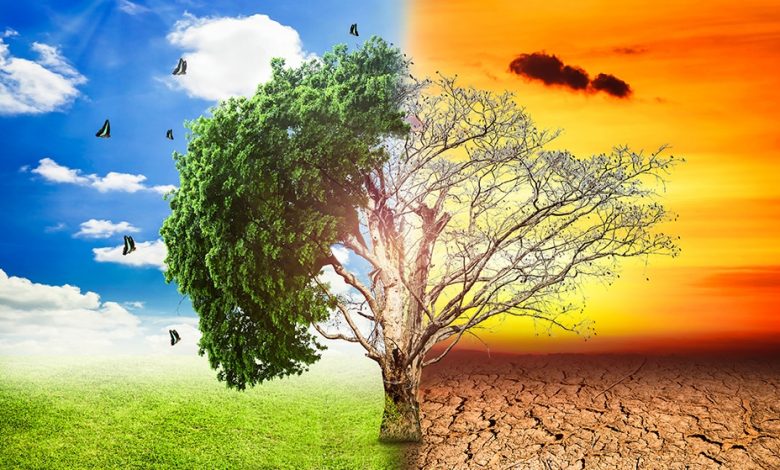90% Likelihood Of One Year In 2021-2025 Being The Warmest : WMO

There is a 90% likelihood of at least one year between 2021-2025 becoming the warmest on record, which would dislodge 2016 from the top ranking, according to the Global Annual to Decadal Climate Update, produced by the United Kingdom’s Met Office& the World Meteorological Organization (WMO), a lead center for such predictions.
The report suggests a 40% likelihood that the long-term global average temperature rise may temporarily hit 1.5°C above pre-industrial levels in one of the next five years.
Keeping temperature rises to 1.5°C is, of course, the Paris goal. There is a risk of this being reported as 1.5°C being breached and therefore out of reach, taking the pressure off trying to stick to it. Therefore, we need to emphasize that even if we do breach 1.5°C in the next few years, this is only temporary at this stage, and not yet locked in for the longer-term. We also want to refocus the attention back onto the risks we already face now at 1.1°C and the unequal distribution of climate impacts around the world.
The report broadly charts year on year temperature rise and it’s expected to give further clarity on how likely we are to temporarily hit a global average temperature of 1.5C over the next five years.
The Paris Agreement seeks to keep global temperature rise this century well below 2°C degrees Celsius above pre-industrial levels and to pursue efforts to limit the temperature increase even further to 1.5°C. National commitments to cut emissions, known as nationally determined contributions, currently fall far short of what is needed to achieve this target.
The acceleration in climate change indicators like rising sea levels, melting sea ice, and extreme weather, as well as worsening impacts on socio-economic development.
“The report also makes clear that impacts of climate change on the world’s poorest countries are escalating, making an urgent case that developed nations should deliver on their commitments for financial support – which is certain to be high on the agenda for next month’s G7 summit.”
Senior Associate at the Energy & Climate Intelligence Unit, Richard Black said:- “As the WMO notes, this report makes an unarguable case that governments and businesses should urgently reduce emissions in the next few years, to keep the door to the Paris Agreement 1.5°C target open.
“Having individual years more than 1.5°C above the historical average wouldn’t mean the Paris target is breached, but this is an unmistakable warning sign that the door will close if governments make the wrong choices.
“Moves such as ending coal-burning, protecting forests, reducing methane emissions and cutting energy waste will all bring multiple benefits as well as providing the ‘quick hit’ of emissions cuts that the world needs.”
We are getting measurably and inexorably closer to the lower target of the Paris Agreement on Climate Change. It is yet another wakeup call that the world needs to fast-track commitments to slash greenhouse gas emissions and achieve carbon neutrality.
Gail Whiteman, Arctic Basecamp founder and Professor of Sustainability at the University of Exeter’s Business School said “The Arctic is warming nearly three times faster than the globe as a whole, which is exacerbating sea-level rise, and worsening global heating as well as extreme weather events, from wildfires in California, Australia and Siberia to extreme snowfalls in North America, Europe and Japan. Arctic warming is already
creating environmental, health and economic risks for citizens, companies and countries around the world.”
A temporary average of 1.5°C does not reflect a breach of the Paris Agreement targets (which have to run on far longer datasets than that of a year’s observance), but any rise in temperature is taking us in the wrong direction. The Earth is also not heating equally, with some parts of the world already experiencing temporary local warming at or above 1.5°C, and the climate impacts that can come with that.
Roxy Mathew Koll, a Climate Scientist at the Indian Institute of Tropical Meteorology, said: “More than 93% of the additional heat from global warming is absorbed by the oceans. Among the oceans, some regions are warming quite rapidly. The long-term surface warming recorded in the western Indian Ocean region, for example, is in the range of 1.2-1.4 C. This has a huge impact on the monsoon and severe weather events. Warmer ocean
conditions are also resulting in the rapid intensification of cyclones. The recent cyclone Tauktae intensified from a weak cyclone to an extremely severe cyclone in a short time.”
With this report coming so closely to the G7 meeting in June, it is likely that climate pledges will come under renewed scrutiny as leaders prep for COP26, with questions asked on how emissions will be slashed by the end of this decade.
“These are more than just statistics,” said WMO Secretary-General Prof. Petteri Taalas. “Increasing temperatures mean more melting ice, higher sea levels, more heatwaves and other extreme weather, and greater impacts on food security, health, the environment and sustainable development,” he said.
This study shows – with a high level of scientific skill – that we are getting measurably and inexorably closer to the lower target of the Paris Agreement on Climate Change. It is yet another wakeup call that the world needs to fast-track commitments to slash greenhouse gas emissions and achieve carbon neutrality.
Dr.Seema Javed is an Environmentalist, Independent Journalist & Strategic Communicator for Climate Change




